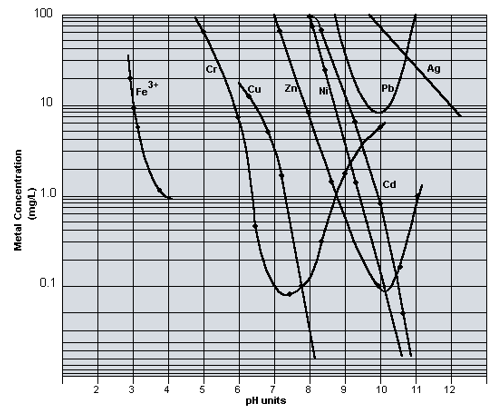Removal of synthesized solution impurities
Published on by alireza makvandi in Technology
Synthetic solution or liquid contains chlorine and metal oxides such as iron, calcium, magnesium, sodium, potassium and aluminum.
My goal is to remove chlorine and all of these oxides except aluminum from the solution. So what method or chemicals should I use to preserve aluminum oxide and remove other impurities?
Thanks
Taxonomy
- Chlorine Dioxide
- Polluted Water Oxidation
- Chlorination
- Oxides
- Chemical Research
- Chemical Engineering
- Chlorine Dioxide Treatment
- Wastewater Treatment Chemicals and Consulting
- Water, Waste Water Chemical & Treatment
5 Answers
-
Dear Alireza,
Recently we investigated electro-oxidation (www.noahws.be) with this technique you could convert the chloride present in the waste water into bleach. Hereby reducing some of your chloride (20%) but giving it a useful function (disinfection, oxidation of organic pollutants). Afterwards with a pH increase like David suggested or with electrocoagulation like Abdul suggested you can remove most of the iron, calcium and magnesium. Unfortunately with these techniques you will not be able to remove the sodium and potassium.1 Comment
-
Thanks miss Dries
-
-
Electro-Coagulation

Demand for advanced, industrial waste water treatment systems is being stimulated by increasingly stringent legislation relating to the disposal of waste water.
The rising cost of process water is forcing industry to adopt water re-use systems.
Electro - Coagulation provides chemical free water treatment of aqueous waste streams and is suitable for a wide range of waste waters
of single or combined element contamination.This is the best way to remove almost all contaminants from the effluent
The other way is the coagulation process by using coagulation process
Please see the detail below:
Wastewater Treatment Chemicals
Wastewater Treatment Chemicals - Accepta's extensive range of technically advanced wastewater treatment chemicals have been specifically developed to be used across a wide range of demanding commercial, industrial and process applications for the treatment of industrial waste waters and effluents.
Accepta’s high performance chemical products focus on improving the operational efficiency of industrial and process waste water and effluent systems by offering intelligent, ready made solutions to the unwanted problems associated with such installations.
Product Range
Accepta’s extensive range of superior quality products includes an excellent line-up of high performance coagulants and flocculants, antifoams and defoamers, polymers, odour controllers, eco-friendly enzyme based formulations, and many more.
- Antifoams and defoamers
- Inorganic coagulants
- Organic coagulants
- Dry anionic polymers
- Dry cationic polymers
- Enzymes and microbes
- Anionic flocculants
- Cationic flocculants
- Liquid anionic polymers
- Liquid cationic polymers
- Odour control
Own Label Services

Advanced Waste Water TechnologyAccepta’s own/white label services offer you the opportunity of having our high quality, manufactured products branded as your own. All Accepta products can be re-branded with your company name, logo, contact details, and more included on each consignment and, if required delivered direct to a site of your choice with your own delivery paperwork.
1 Comment
-
Thanks
-
Your best bet is vigorous aeration which will reduce the chlorine.
Then adjust the pH to optimize the precipitation of other metals but keep the AL in dissolved form. (SEE Practical Wastewater Treatment by D. L. Russell and the figure below) The Chlorine can be removed by vigorous aeration

2 Comments
-
Do you think that with this method (vigorous aeration), chlorine and other metal oxides can be removed from the solution and aluminum oxide can remain in the solution?
-
Thanks
-
-
chlorine is easy. Just add a little reducing agent like sodium bisulfite or thiosulfate or hydrogen peroxide. Yes , peroxide is a reducing agent in the present of oxidizing agents, If you make the solution slightly basic, aluminum hydroxide will form a gelatinous precipitate.
2 Comments
-
Can we really remove chlorine and other metal oxides by adding sodium bisulfite or thiosulfate or hydrogen peroxide, and finally obtain a gelatinous precipitate of aluminum hydroxide? If you have an article about this, please send it to me. thank you
Address Email: alirezamakvandi52@gmai.com
-
Thanks
-
-
Have you tried an alternative disinfection methode, such as hydrogen peroxide?
1 Comment
-
No. Do you think it can help remove these metal oxides and chlorine?
-